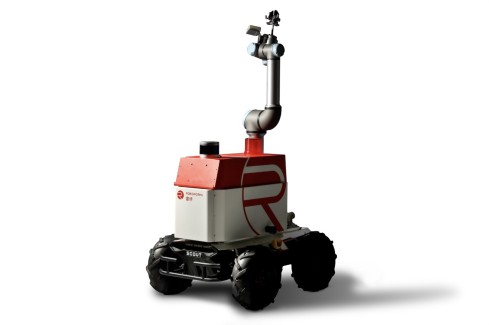Pickerbot - a tomato harvesting robot
Problems
The world is facing a food shortage crisis after the COVID 19 pandemic started. Increasing labor costs and significant reduction on the working population in the agriculture sector further deteriorate this crisis compounded by global warming and trade wars.
Objectives
The purpose of this project is to develop a harvesting robot for tomato green houses. The tomato harvesting robot should be able to navigate in a green house environment, recognize tomatoes and determine whether it is ripe enough to be picked. Then it should place the tomato to a nearby container without damaging it. After picking job has been done, it should also carry the tomato containers to the warehouse.
There are three problems this project will address:
1.Efficiency - how to improve tomato picking and transporting efficiency
2.Crop Damage - how to reduce crop damage rate during picking and transporting
3.Cost - how to reduce operational and labour costs
Solution
A robotic platform is designed and developed to conduct the harvesting tasks integrated with Deep Learning A.I. algorithm, soft gripper and 4WD driving system.
- The biggest challenge for the existing competitors is the speed to recognize a ripe tomato and the effective grip on the tomato without damaging it.
- Combining IoT (Internet of Things) technology, our solution allows tomato visual information can be captured and analyzed before the harvest season. This will save time for the robot to locate and recognize the ripe tomatoes during the picking work. The data captured by the IoT devices are sent to a Deep Learning Server to analyze and test our computer vision algorithm. The proven successful algorithm and data model will be then installed onto the A.I. board on the robot, reducing the need a robot keeping constant communication with the A.I. server over the cloud.
- This soft gripper is tailored made to suit this specific tomato picking scenario. It integrates with Talk-force sensor and collaborative robotic arm in order to maintain flexibility and agility when picking the tomatoes.
Progress
The project has gone through the first iteration of the R&D cycle from 2020 to 2021. The first generation prototype named Pickerbot v.1 was designed, built and tested in 2021. This prototype has achieved the following technical milestones:
- Vision Recognition - 98% success rate of individual tomato based on shape, size, color and maturity.
- Soft Gripping - lower than 1% crop damage rate.
- Picking Efficiency - 8~10 seconds per fruit
Traction
Pickerbot has attracted attentions from several potential clients in the Asia Pacific region. One of these potential clients has the largest tomato green house in Asia. Roboworks also conducted field testings in this largest tomato green house in Asia.
Next Step
Roboworks has started to develop the 2nd generation Pickerbot. It is expected Pickerbot v.2 will be completed by end of 2022 and will be commercialized in 2023.
Video


